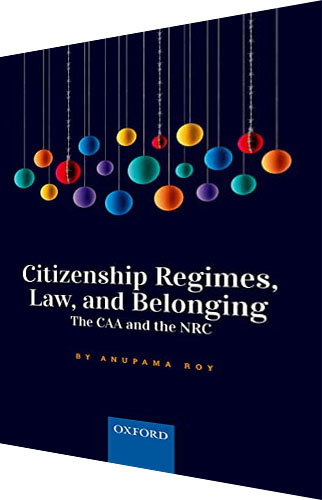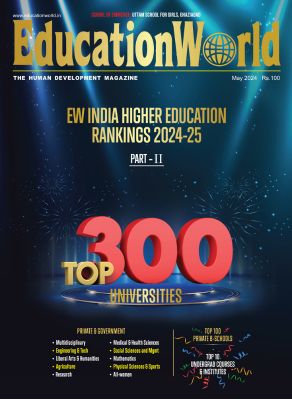Citizenship regimes, law & belonging: the CAA & the NRC
Anupama Roy
Oxford university press
Rs.1,495 Pages 270
The power of the State to determine membership of political communities and people’s power to challenge the State are discussed

In Citizenship Regimes, Law, and Belonging: The CAA and the NRC, Anupama Roy examines the form and content of recent changes to citizenship laws in India by placing the Citizenship Amendment Act (CAA, 2019), the National Register of Citizens (NRC), and the Land Border Agreement (LBA, 2015) in their historical, ideological, and political contexts.
The power of the State to determine one’s membership of a political community and the people’s power to challenge state power are the two types of powers that Roy alludes to at the beginning of the book. These allusions are elaborated with reference to two historical moments.
The first moment was the people’s non-violent resistance in the South African province of Transvaal led by Mahatma Gandhi against state power. The people, largely Indians, were protesting against the imposition of the Transvaal Registration Act (1906) because it created an identity card for non-whites, who wanted to reside in Transvaal. But the identity card involved profiling Indians with photo mugshots and fingerprints, which the protesters believed was an affront to their dignity as they were being treated like criminals.
The second moment is borrowed from Saadat Hasan Manto’s short story, Toba Tek Singh. In the midst of the violence wrought by the Partition of India in 1947 and discord between the newly-formed nations of India and Pakistan on most matters, the two governments concurred on the exchange of ‘lunatics’. The inmates of the lunatic asylum however resisted the madness outside. They refused to be boxed into either India or Pakistan. If Partition created new boundaries for India and Pakistan, the madness of Partition violence smudged the boundaries between lunacy and rationality.
The two moments from the early and mid-20th century display the expansive power of the State to impact affective ties. At the same time, they reflect the power of the people to resist the State, and raise questions about the relationship between legal rationality and the power of the law. Those moments have found a new iteration in the 21st century.
In chapter one titled Hyphenated Citizenship: The National Register of Citizens, Roy contends that NRC through the judicial route and the CAA through the legislative route introduced two distinct ways of determining Indian citizenship. The NRC in Assam became a citizenship register for people of Assamese origin as well as for identifying ‘illegal migrants’, who were incarcerated in detention centres. CAA made religion a criterion for determining those amongst illegal migrants who were eligible for Indian citizenship by naturalisation.
Chapter two is titled Bounded Citizenship: The Citizenship Amendment Act 2019, where Roy examines the discourses surrounding the CAA and notes that the category of ‘illegal migrant’ had acquired a connotation that differs from the NRC. While the CAA sought to stretch citizenship safeguards to people facing religious persecution, it denied those safeguards to certain others because of their religion.
Chapter three titled Liminal Citizenship: The “Returnees” and “New” Citizens deals with the aftermath of the Land Border Agreement (LBA, 2015) that sought to settle border disputes between India and Bangladesh.
LBA connected territorial borders with political sovereignty, provided for the exchange of enclaves, and land in ‘adverse possession’. These enclaves were patches of land belonging to one nation-state but were situated inside the territory of the other. Those residing in the enclaves were dissociated from the exercise of ‘effective citizenship’ and reduced to the status of ‘nowhere people’, often on tenterhooks, fearing becoming stateless and illegal aliens. The Treaty provided for the transfer of 111 enclaves from India to Bangladesh and 51 enclaves from Bangladesh to India. Those residing in the enclaves were given the right to remain on the territories as nationals of the State to which the territories were transferred.
Chapter four is titled Recalling Citizenship: The Constitutional Ethic. Roy affirms that while recent changes in citizenship laws have caused fissures within Indian society and produced a regime at odds with the constitutional vision of inclusive citizenship, these changes have also resulted in a more intense consciousness about citizenship. Roy views this as an affirmation of a shared life, and a bulwark against divisive faith-based citizenship. For this new consciousness, the Indian Constitution has become an ‘insurgent text’ and a rallying point for the protests against CAA and NRC. This non-violent protest emerged as a site of empowerment and resistance.
The constitutional vision of citizenship was a response to discriminatory practices that Indians faced: religious and caste supremacism, untouchability, racial supremacism of European colonialism, and separatism that emerged out of the two-nation theory which led to the partition of the country. What was radical about our Constituent Assembly, despite differences among members, was a shared intention to challenge discriminatory world views and practices, and to inaugurate a more enabling society for Indians as equal citizens of the new Republic.
While affirming this, Roy’s powerful and moving text compels the reader to raise wider questions about what political communities owe to persons as humans, not merely as legally recognised members of their states. There are many layers of belonging, which cannot be all compressed into only legal-administrative categories. This book is as much about regimes and regulations, as about civilian resistance in our Republic.
Swaha Swetambara Das
(The Book Review)




























